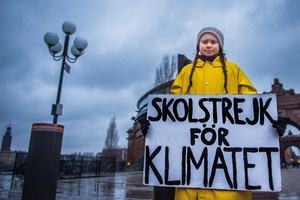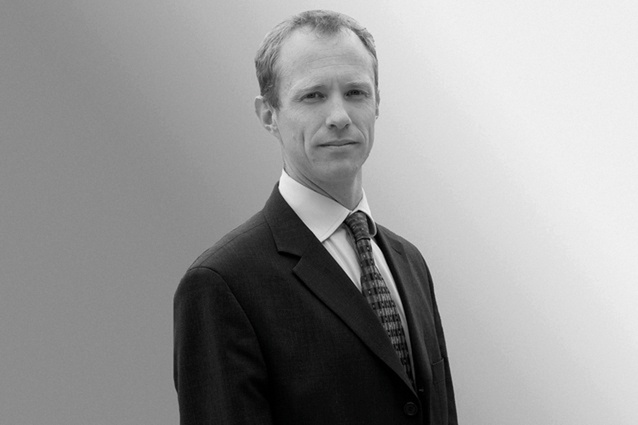Climate change: Action from the ground up
Partner Content: Children around the globe are following the lead of 16-year-old Swedish climate activist Greta Thunberg by striking from school to prompt their governments to make radical responses to climate change. But what would a radical response look like and what is needed to combat the changes we are now facing as the earth heats up?
The most concise way to slow or reduce climbing temperatures is to minimise your carbon footprint, and an important way this can be done is through careful and considered building methods. Emissions from the construction industry in New Zealand rose 43 per cent between 1990 and 2015. Now, they make up 17 per cent of all CO2 emissions. The construction industry can play a large part in reducing this problem.
The uptake of home-owners designing their homes to meet Passive House or Homestar ratings is climbing. This means there are lower levels of carbon emission from electricity use and chemicals in materials used for building, but a large amount of emissions still come from factories producing materials for construction and fit-outs, as well as from waste when those materials come to the ends of their lives.
One company taking the problem seriously is global commercial flooring company Interface, which, over the past 20 years, has been moving towards significantly reducing its carbon footprint and restoring the environment through an ambitious commitment called Climate Take Back.
This comprises four pillars: Live Zero by doing business in ways that give back whatever is taken from the earth; reframe carbon as a resource, not an enemy, in order to Love Carbon; inspire the industry to transform into a force for climate progress and Lead Industrial Re-revolution; and support the earth’s natural ability to regulate the climate (Let Nature Cool).

Since 1994, Interface has transformed from a smokestack factory to a zero-emissions plant with sustainable production methods. It is working towards an ambitious goal beyond 2020 to create a factory that actually gives back to its site and runs like a natural ecosystem.
This is the aim of Interface’s pilot programme, Factory as a Forest, which looks to go beyond doing less harm and actively do more good. Interface also explores raw materials that use waste carbon or sequester carbon to make products. Programmes like the Net-Works initiative, which sources material for carpet tiles from discarded fishing nets, show what can be accomplished when new thinking is applied to materials sourcing. Not only do the old nets have new lives, the villagers who collect them enjoy a cleaner environment and a new measure of economic independence.
Interface has transformed from a company built on oil to one built on renewable energy. As an original funder of Project Drawdown, Interface supports technological, ecological and social solutions to bring about the reversal of global warming.
All Interface’s products, available anywhere in the world, are now carbon neutral. Any extra cost of making them this way is not transferred to the consumer. They are made using 100 per cent renewable energy for electricity in Australia.
New materials will be a combination of bio-based and recycled and with reduced 91 per cent waste to landfill. Interface’s ReEntry™ programme recycles old carpets in its manufacturing, thus creating a product that contributes to the circular economy. Any such new materials reduce the company’s reliance on oil. The whole product life cycle, including transport and customer use, are also taken into account in the calculation of the product’s emissions, and any residual carbon is offset by a variety of funds that support the protection of natural habitats and improve the lives of communities impacted by climate change and deforestation.
Climate Take Back™, invites other companies to join them as they commit to running their business in a way that is restorative to the planet and creates a climate fit for life. Surprisingly, this also involves seeing carbon as an opportunity that can be used to create products, as opposed to seeing it as a challenge. This has instigated the design of a carpet tile that utilises carbon and stores it away, just as a tree does.
Emissions from the company’s global factories have dropped dramatically, with a greenhouse gas reduction of 96 per cent and a 66 per cent reduction in the carbon footprint of the manufacturing process. The company is poised to meet its goal of eliminating any negative impact on the environment by 2020.
Teen stands up against global warming
Greta Thunberg is a Swedish girl who in September of 2018 at the tender age of 15, came to notoriety for staging a protest aimed at making politicians pay attention to climate change.
Thunberg’s initial protest involved camping out, by herself, in front of the Swedish parliament, instead of attending school, and handing out leaflets. Her efforts became widely known and it is reported that up to 20,000 students from around the world have followed her example.
The now 16-year-old has by now spoken in large international arenas such as the United Nations and the World Economic Forum at Davos, and continues her outspoken efforts to curb carbon emissions and call on politicians to make bigger efforts to do so.

Andrew Eagles
We caught up with the New Zealand Green Building Council’s CEO, Andrew Eagles, to check in on the state of carbon neutral construction in New Zealand.
Are there any new developments for those wanting to create carbon neutral buildings locally?
Andrew Eagles (AE): Yes, the New Zealand Green Building Council has developed a tool for tracking carbon for any existing building. This is due for release soon. It will enable certification through Green Star Performance or NABERSNZ (the New Zealand adaptation of the National Australian Built Environment Rating System). Watch this space! It’s an indicator that there are far more tenants and developers asking about carbon reduction in building projects.
How will people achieve that standard?
AE: People will need to use the NABERSNZ certification route or the Green Star performance certification route. Then the goal is to reduce your emissions to a very low level and offset what you do generate.
In terms of products and materials, we are seeing more people wanting to do better in Green Star, and that means searching for more credits and using better-performing products. We’re seeing a really big rise in the use of the circular economy. Companies like Interface, with a focus on taking back carpets and using recycled materials, are really good to see. Some councils are also starting to look more seriously at how they can reduce construction and demolition waste going to landfill.
Are there any specific examples of companies or projects doing this well in New Zealand?
AE: Auckland Council’s HQ at 135 Albert Street targeted and achieved a 6 Green Star Interiors rating. As a result, they needed to divert 80 per cent of waste away from landfill. They reused diffusers, wiring and aluminium trunking. That was nine tonnes of material diverted. They also reused the glass partitions and the Lundia shelving.
They worked in collaboration with EcoMatters and Global Action Plan Oceania and took an inventory of insulation, bookshelves, cupboards, furniture and hot water cylinders. These were provided at a small percentage of cost to other parties. For instance, the Kaitaia Community Group gained a lot of furniture for its offices.
The ceiling tiles came in at 109 tonnes and, because they had certainty that there was such a big quantity, a company called Envirofert, along with Green Gorilla, invested in a new plant capable of a higher recycling yield to cope with this load. What that’s saying is the more companies divert material from landfill when they build or fit out, the more the firms that recycle and reuse materials will get better at it.
Do you think we are moving quickly enough compared to the rest of the world with our eco building methods?
AE: I think the question is “Are we moving fast enough?” Full stop. And the answer is “No”. For instance, the government, the biggest user of office buildings in New Zealand, is not doing Green Star, so all the waste from government buildings and projects is probably going to landfill. The rest of the world is moving slowly as well. Saying that, in the UK, they put a £80/ tonne levy on waste going to landfill and that changed things. We need a levy on all landfill and we need to move a lot more quickly.
This article first appeared in Interior magazine.

ArchitectureNow works with a range of partners in the A&D supply sector to source appropriate content for the site. This article has been supported by Interface.












